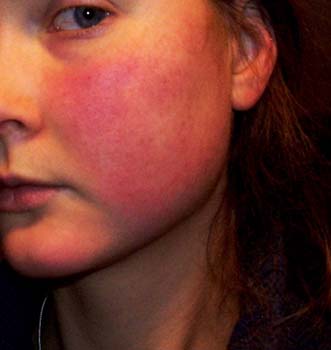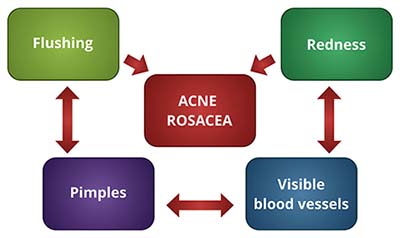

Rosacea affects all ages and has 4 subtypes, three affecting the skin and the fourth affecting the eyes.
Erythematotelangiectatic Rosacea:- It shows as a permanent redness with a tendency to flush and blush easily.
- Small widened blood vessels are visible on the skin and may be accompanied by intense burning, stinging, and/or itching sensations.
- Often their skin is sensitive and can become very dry and flaky.
- In addition to the face, symptoms can also appear on the ears, neck, chest, upper back, and scalp along with other symptoms of Rosacea.
- It is characterized by redness and with small eruptions, sometimes pus-filled, which last for 3-4 days or longer.
- This subtype has rhinophyma, i.e. an enlargement of the nose, thickened skin and irregular surface nodularities.
- It can also affect the chin, forehead, cheeks, eyelids, and ears. Telangiectasias may be present apart from other symptoms of Rosacea.
- This is characterized by red, dry, irritated or gritty, watery eyes and eyelids with sensitivity to light.
- Eyes can become more susceptible to infection. Blurry vision and loss of vision can occur if left untreated.















